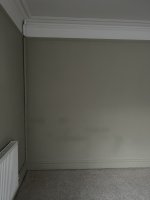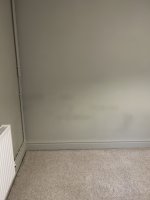Yasmine0777
New Member
Hi all, I live in a property built around 1910 that’s semi-detached. We’ve had a problem with damp on 2 of the internal walls. We had a damp proofing company come out who recommended that we take around 1m of the plaster off, drill holes and inject membrane into the walls and re-plaster. I mist coated the fresh plaster and have painted a light green colour and can still see the damp coming through. The damp proof course was done around Jan/Feb and I thought maybe it just needed a bit of time to dry out but it’s still there. They also laid down a damp proof concrete layer in the hallway over the top of the quarry tiles as these were very damp. Any advice on what we can do next please?!!



